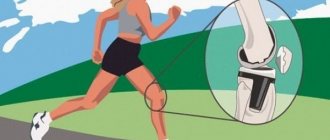Chest pain can be a symptom of dozens of conditions related to the heart, stomach, lungs, musculoskeletal and neurological problems. Some situations require urgent medical attention, while others do not require treatment. But only a specialist can determine the danger of the cause of pain after a comprehensive diagnosis. For any pain in the chest, contact the diagnostic department in Anapa. Here the source of anxiety will be determined and a treatment plan will be drawn up.
Why does my chest hurt?
Cardioneurosis
Tingling in the left half of the chest, especially in the projection of the heart, most often occurs with neuroses.
Uncomfortable sensations in the chest are provoked by mental fatigue, stress, and are occasionally observed during physical exertion. Patients tend to talk in detail about their condition: they select many words to describe the pain (stabbing, aching, squeezing). Simultaneously with the tingling sensation, a sinking heart, chills or hot flashes are felt. As a rule, a person mistakes the symptoms of cardioneurosis for signs of a serious cardiac disease. There is increased anxiety and fear of death, which aggravate the course of the disease. Stitching sensations bother the patient several times a day, last no more than 1 hour, and are of mild or moderate intensity. Tingling attacks can disappear as suddenly as they begin.
Somatized depression
For mental disorders, tingling and cardialgia with a pinching feeling in the chest (“precardiac melancholy”) are pathognomonic. Symptoms often appear in the morning, immediately after waking up, but as depression progresses, the diurnal periodicity is lost. Tingling is complemented by autonomic changes: hyperhidrosis, bradycardia or tachycardia. The psycho-emotional state is characterized by irritability, fatigue, and apathy.
Cardiovascular diseases
Tingling on the left side of the chest is observed in organic and functional cardiac diseases. Usually it is the first symptom of pathology. The intensity of the sensations varies depending on the cause. With organic damage, there are strong “lumbago”, forcing the person to freeze and put his hand to the pre-cardiac region. Typical cardiac factors for chest tingling:
- Arrhythmias.
Rhythm interruptions are manifested by mild and short-term stabbing sensations, which are clearly localized in the chest. Against their background, the patient experiences freezing or, conversely, too fast heartbeat. Symptoms have no clear provoking factors and can appear at any time of the day. - Cardiac ischemia.
IHD is characterized by intense stabbing pain, which is felt behind the sternum or in the entire left half of the chest, radiating to the shoulder blade and arm. The attack lasts 5-10 minutes and is quickly stopped by taking nitrates. If the symptoms give way to excruciating burning or pressing pain, there is a risk of unstable angina, progressing to myocardial infarction. - Inflammatory processes.
Tingling in the chest of moderate strength, which does not have a clear localization, is typical of myocarditis, endocarditis, pericarditis. The symptom may be related to a bacterial or viral infection suffered a couple of weeks ago. Patients also complain of shortness of breath, increased fatigue, and fever. - Cardiomyopathies.
Non-inflammatory myocardial damage is characterized by a long-term, asymptomatic course. A person occasionally notices tingling in the precordial area, shortness of breath during physical exertion, and interruptions in heart function. Stitching sensations do not radiate and are mild or moderate. - Heart defects.
Tingling in the chest occurs in pathologies with unchanged or partially altered blood circulation, which is not critical for the condition. In addition, shortness of breath, attacks of tachycardia or cardiac arrest, cyanosis of the nasolabial triangle and fingertips are noted.
Tingling in the chest
Anemia
A stabbing sensation in the chest on the left is one of the components of anemic syndrome caused by a lack of hemoglobin and insufficient oxygen saturation of tissues. Discomfort is most pronounced during physical activity, and with moderate and severe anemia it also occurs at rest. In addition to tingling, there is pale skin, frequent attacks of dizziness and tinnitus, and fatigue.
Respiratory diseases
Strong stabbing sensations are typical for pleural pain, which develops against the background of dry pleurisy, pneumothorax, and carcinomatosis. The tingling is one-sided, sometimes radiating to the interscapular area. The pain is aggravated by coughing and laughing. Therefore, the patient lies on his side on the affected side, trying not to move for longer. The symptom is accompanied by shortness of breath, lag of half of the chest in breathing.
Tuberculosis
In the presence of a primary tuberculosis complex and involvement of the intrathoracic lymph nodes, patients feel a slight tingling sensation on the side of the active process or in the center of the chest. The symptom is supplemented by night sweats, cough with scanty sputum. When tuberculosis is complicated by pleurisy, sharp stabbing pain occurs on one side of the chest. The pain intensifies with a deep breath and bending the body in the opposite direction.
Intercostal neuralgia
When the intercostal nerves are damaged, a person experiences a sharp tingling and shooting pain, which is localized in one place in the chest or spreads along the ribs. The stabbing sensation sharply intensifies when palpating the intercostal spaces, taking deep breaths and turning the body. The attack lasts a couple of minutes, during which time the patient freezes and tries not to breathe for fear of worsening the pain.
The clinical picture of intercostal neuralgia is complemented by paresthesia (“crawling”) and numbness on the affected side of the chest. Skin hyperemia and local hyperhidrosis are less common. Tingling attacks that occur on the left side of the chest resemble cardiac pain. Middle-aged and elderly patients often try to relieve discomfort with nitroglycerin, but it has no effect.
Fibromyalgia
This disease is characterized by tingling of varying intensity throughout the chest. Pain is also felt in the abdomen, arms and legs - patients complain that “it hurts everywhere.” Symptoms appear for no apparent reason and last for several weeks or even months. On the skin of the chest, a feeling of “crawling”, numbness, and burning may occur. With fibromyalgia, pain is complemented by weakness and malaise, insomnia, and depression.
Inflammatory diseases of the ribs
Tingling may be one of the manifestations of Tietze syndrome. Stitching sensations occur near the sternum, usually on one side. They begin suddenly and become more severe with awkward movements, coughing and sneezing. Symptoms persist for several years with alternating periods of exacerbations and remissions. Tingling in the chest also occurs with aseptic periostitis and osteomyelitis of the ribs.
Gastrointestinal pathologies
With lesions of organs located in the upper abdomen, tingling in the lower, less often middle, parts of the chest is often disturbing, which is due to the peculiarities of innervation. A stabbing sensation in the middle of the chest, above the epigastrium, is characteristic of hyperacid gastritis, gastric ulcer. With cholecystitis and hepatitis, tingling is observed in the chest on the right. There is a clear connection between discomfort and food intake and errors in diet.
Breast diseases
With mastopathy, a woman complains of pain and tingling in one or both mammary glands. Unpleasant sensations intensify before menstruation, during which time the breasts become very sensitive. Sometimes the stabbing pain has a clear localization, which is typical for the focal form of the disease. Similar symptoms occur with a cyst or fibroadenoma of the mammary gland.
Diagnosis of the causes of pain in the mammary gland
- Consultation with a mammologist. After a thorough examination, the doctor can refer the patient to other specialists at our medical center - a gynecologist, endocrinologist, surgeon, oncologist, geneticist.
- Instrumental studies: ultrasound of the mammary glands;
- ductography (determining the patency of the ducts);
- digital and MR mammography.
- biopsy followed by histological examination;
Diagnostics
Tingling in the chest has dozens of etiological factors, so a detailed examination is necessary to clarify them. Several specialists are involved in the diagnostic search: neurologist, cardiologist, therapist, etc. To determine the cause of stabbing pain in various parts of the chest, a set of laboratory and instrumental methods is selected, which includes:
- Electrocardiography.
ECG is used to diagnose rhythm disturbances: extrasystoles, blockades. The cardiogram also shows signs of ischemic heart disease, myocarditis, and hypertrophic cardiomyopathy. To assess the functional class of angina, cardiology specialists prescribe a stress test (ECG with dosed exercise). - Ultrasonography.
If abnormalities are detected during electrocardiography, echocardiography is performed. Ultrasound of the pleural cavity is informative for detecting pleurisy. For unclear tingling in the lower chest, sonography of the abdominal organs is performed to identify an inflammatory process or signs of an ulcerative defect. Ultrasound screening is the first stage in diagnosing breast diseases. - X-ray methods
. Chest radiography is a standard method that visualizes pathological changes in the pulmonary parenchyma, pathognomonic changes in the configuration of the heart. If joint damage is suspected, an x-ray of the ribs is indicated. To clarify the diagnosis, a chest MRI is done. - Blood tests.
The hemogram can reveal anemia and nonspecific signs of inflammation. Biochemical blood tests help diagnose coronary diseases (based on specific changes in the lipid spectrum). If there is a strong stabbing sensation in the heart area, it is advisable to examine myocardial markers.
Considering that a common cause of tingling in the chest is disturbances in the functioning of the central nervous system, the patient is recommended to undergo a complete neurological examination with a check of the vegetative status. In rare cases, electrophysiological methods are prescribed: EEG, electroneuromyography (ENMG). According to indications, a psychiatrist is involved in the diagnostic search, who can identify signs of masked depression.
Consultation with a therapist for tingling in the chest
Hernia of the thoracic spine
Intervertebral herniation of the thoracic spine (thoracic) is a disease in which parts of the intervertebral discs fall out into the spinal cord. The cause of this disease is:
- scoliosis;
- osteochondrosis;
- other vertebral pathologies leading to metabolic disorders in the tissues of the intervertebral disc, which leads to their thinning.
As a consequence, at first there is a protrusion of the fibrous ring, and as the disease progresses, a crack appears, from which the nucleus pulposus stands out. Compression of the nerve endings also occurs, which causes severe back pain.
In the absence of therapy, the pain syndrome increases and becomes permanent. The danger of a hernia is that it can easily be confused with other diseases, including heart pathologies. In addition, at an early stage the disease is asymptomatic, which complicates diagnosis.
With a hernia of the thoracic region, pain is observed that resembles a heart attack. Occasionally, intercostal neuralgia develops as a complication.
Treatment
Help before diagnosis
To eliminate tingling in the chest, you need to know its cause. You can only use non-drug methods on your own. A stabbing sensation of discomfort in the chest is often provoked by stress and overwork, so a person should avoid these factors as much as possible. Physical activity is necessary, but it needs to be dosed so as not to stretch the muscles and cause pain. Stitching pain in the chest is a reason to see a doctor.
Conservative therapy
Tingling in the chest is predominantly of mild or moderate intensity, and therefore does not require the use of analgesics. For painful symptoms, painkillers are used to temporarily relieve the condition. The basis of treatment is etiotropic therapy, which eliminates the cause of tingling. Drugs are selected based on the type of pathology. The following medications are used:
- Anti-inflammatory drugs
. Necessary for a wide range of conditions: from myocarditis and pericarditis to inflammation of the costal cartilages. Representatives of the group of nonsteroidal anti-inflammatory drugs have an additional analgesic effect and quickly relieve unpleasant symptoms. For serious illnesses, therapy is enhanced with corticosteroids. - Medicines affecting the central nervous system
. Recommended for cardioneurosis, depression, intercostal neuralgia. Treatment begins with light sedatives, which, if necessary, are supplemented with antidepressants and tranquilizers. - Antiarrhythmic drugs
. The heart rate is normalized, so the tingling in the chest and the feeling of a sinking heart disappear. Cardiologists select medications of several classes, taking into account the type of arrhythmia and its severity, the presence or absence of other lesions of the cardiovascular system. - Antibiotics
. Used for bronchopulmonary diseases caused by infections. For the treatment of confirmed tuberculosis, special antibiotics taken over long courses are needed. The inclusion of antimicrobial agents in the treatment regimen is justified for rheumatic carditis, acute cholecystitis, and gastritis caused by H. pylori. - Iron supplements
. Prescribed for anemia to increase hemoglobin levels and eliminate symptoms (stabbing sensations in the chest, dizziness, weakness). When red blood counts are low, blood transfusions are indicated, which quickly normalize well-being.
Physiotherapy methods are effective as an addition to pharmacological treatment and can successfully relieve discomfort. For stabbing pain, hydrotherapy, laser therapy, and magnetic therapy are used. Cognitive-behavioral psychotherapy methods can help eliminate the emotional and neurological causes of tingling in the chest. Biofeedback therapy is useful to enhance stress resistance.
Treatment of breast pain
Treatment of painful sensations in the mammary gland is aimed at the underlying disease. The Clinical Hospital on Yauza provides treatment for identified mammary gland pathologies of any complexity:
- conservative drug treatment of breast diseases;
- surgical treatment, which includes sectoral resection of the mammary gland (organ-sparing surgery, without breast removal); radical mastectomy with removal of regional lymph nodes; plastic surgery (breast resizing, reconstruction, lift).
- chemotherapy - used in the presence of malignant neoplasms, breast cancer.
If you have any doubts about the health of the mammary glands, do not hesitate to consult a specialist mammologist. Even breast cancer detected at stage 1 is completely curable in 80% of cases and allows you to save the breast.









